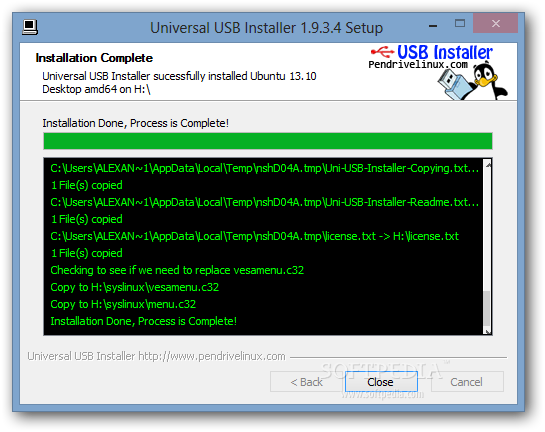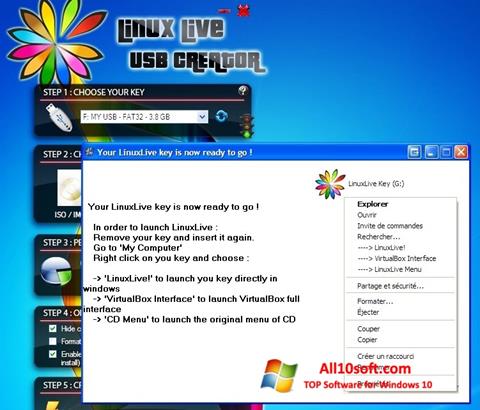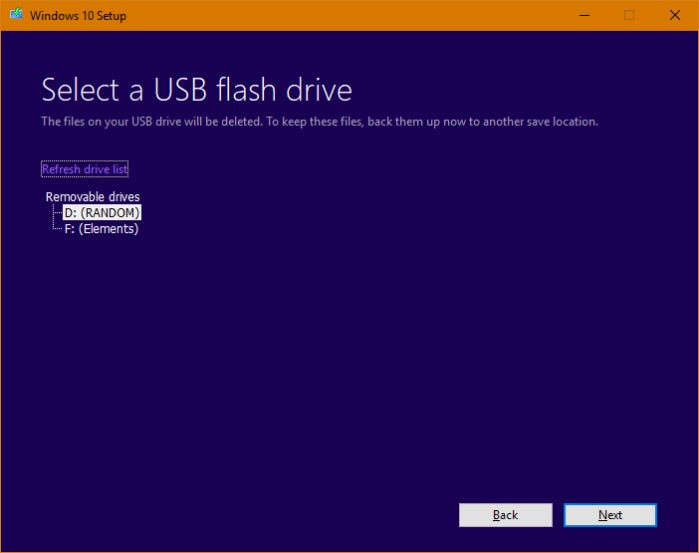
Microsoft owns patents on several elements of its design. exFAT was proprietary until 28 August 2019, when Microsoft published its specification. Android 13 and some devices running previous versionsĮxFAT ( Extensible File Allocation Table) is a file system introduced by Microsoft in 2006 and optimized for flash memory such as USB flash drives and SD cards.Linux (mainline kernel driver for kernels 5.4 and later and FUSE ).
 Windows XP (including 圆4) SP2 and later (optional ). Yes, EFS supported in Windows 10 v1607 and Windows Server 2016 or later. Read-only, hidden, system, subdirectory, archive BDP/ GPT: EBD0A0A2-B9E5-4433-87C0-68B6B72699C7ġ28 PB (theoretical 16 EB – 1 byte) Īll Unicode characters except U+0000 ( NUL) through U+001F ( US) / ( slash) \ ( backslash) : ( colon) * ( asterisk) ? ( question mark) " ( quote) ( greater than) and | ( pipe). MBR/ EBR: 0x07 (same as for HPFS/ NTFS). There, scroll to the "Create Windows 10 installation media" option and click "Download tool now. Open the Download Windows 10 website in a browser. It doesn't need to be blank, but note that any content on the drive will be erased during the setup.Ģ. Once that's done, you'll move them to the new computer. To get the Windows installation files ready, you'll need a Windows computer that's already set up and connected to the internet. You should also note that while Windows 10 is free to install, you'll need to pay for an activation key to unlock all of its features once you get it running. While internet access is generally not required for setup, in some rare cases (notably, Windows 10 in S mode), your computer needs a connection to the internet via Ethernet or Wi-Fi. Display: It should support at least 800圆00 pixels. Graphics chipset: It needs to be compatible with DirectX 9 or later, with WDDM 1.0 drivers. You'll need 20 GB or more for 64-bit Windows 10. Storage: 16 GB or more free space on your hard drive for the 32-bit version of Windows 10. RAM: At least 1 GB for the 32-bit version of Windows 10. If in doubt, here are the minimum system requirements you'll need: Microsoft's system requirements for Windows 10 are fairly relaxed - you don't need a powerful computer to get it up and running. System requirements for installing Windows 10 All you'll need is a USB flash drive and another computer with access to the internet.
Windows XP (including 圆4) SP2 and later (optional ). Yes, EFS supported in Windows 10 v1607 and Windows Server 2016 or later. Read-only, hidden, system, subdirectory, archive BDP/ GPT: EBD0A0A2-B9E5-4433-87C0-68B6B72699C7ġ28 PB (theoretical 16 EB – 1 byte) Īll Unicode characters except U+0000 ( NUL) through U+001F ( US) / ( slash) \ ( backslash) : ( colon) * ( asterisk) ? ( question mark) " ( quote) ( greater than) and | ( pipe). MBR/ EBR: 0x07 (same as for HPFS/ NTFS). There, scroll to the "Create Windows 10 installation media" option and click "Download tool now. Open the Download Windows 10 website in a browser. It doesn't need to be blank, but note that any content on the drive will be erased during the setup.Ģ. Once that's done, you'll move them to the new computer. To get the Windows installation files ready, you'll need a Windows computer that's already set up and connected to the internet. You should also note that while Windows 10 is free to install, you'll need to pay for an activation key to unlock all of its features once you get it running. While internet access is generally not required for setup, in some rare cases (notably, Windows 10 in S mode), your computer needs a connection to the internet via Ethernet or Wi-Fi. Display: It should support at least 800圆00 pixels. Graphics chipset: It needs to be compatible with DirectX 9 or later, with WDDM 1.0 drivers. You'll need 20 GB or more for 64-bit Windows 10. Storage: 16 GB or more free space on your hard drive for the 32-bit version of Windows 10. RAM: At least 1 GB for the 32-bit version of Windows 10. If in doubt, here are the minimum system requirements you'll need: Microsoft's system requirements for Windows 10 are fairly relaxed - you don't need a powerful computer to get it up and running. System requirements for installing Windows 10 All you'll need is a USB flash drive and another computer with access to the internet. 

These days, installing Windows 10 is simple. Installing Windows used to require putting the files on a CD or DVD.
To install Windows 10, your PC will need at least a 1 GHz CPU, 1 GB of RAM, and 16 GB of hard drive space. Your USB flash drive will need to be 8GB or larger, and preferably should have no other files on it. 
You can install Windows 10 by downloading a copy of the installation files onto a USB flash drive.








 0 kommentar(er)
0 kommentar(er)
